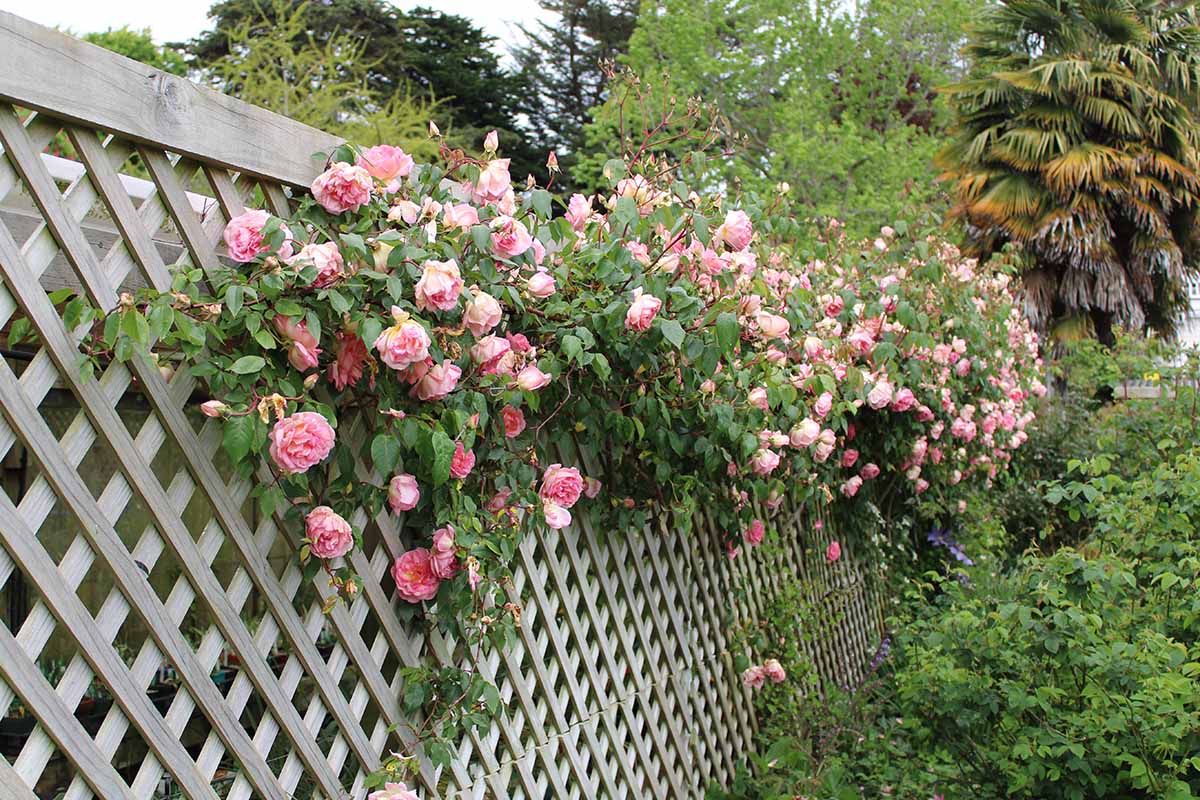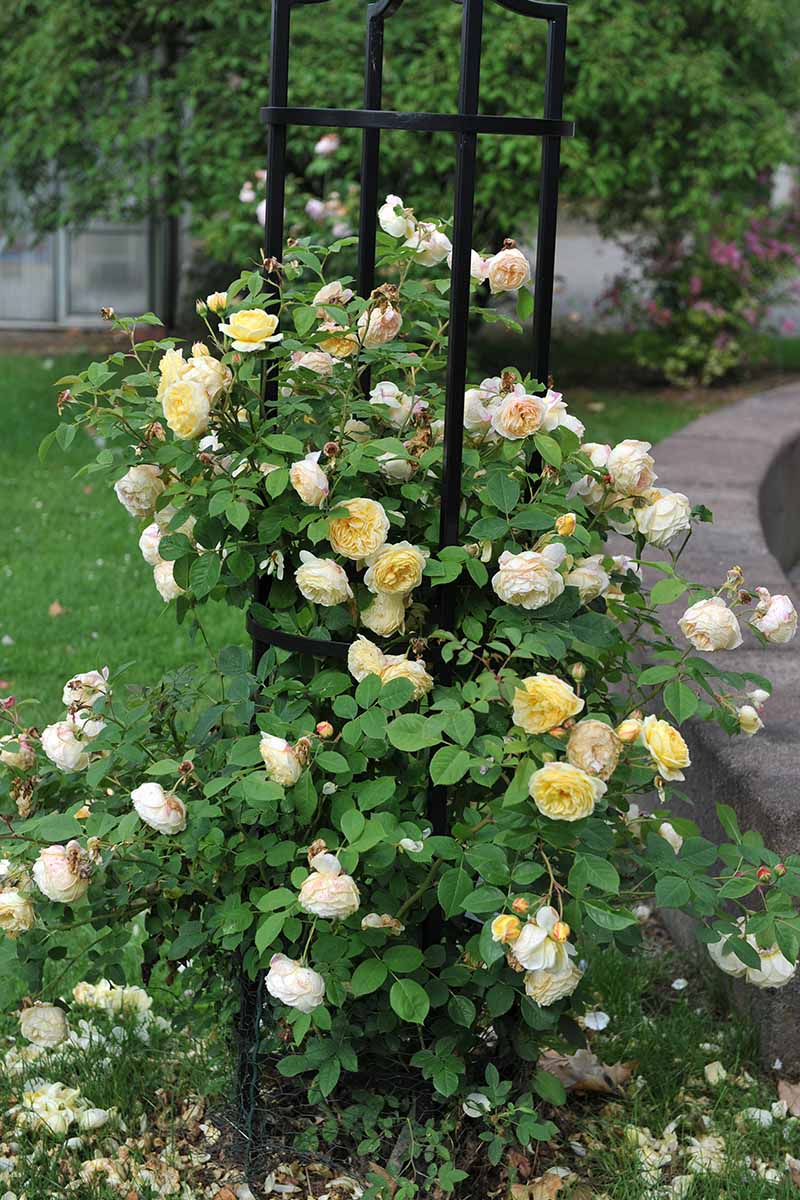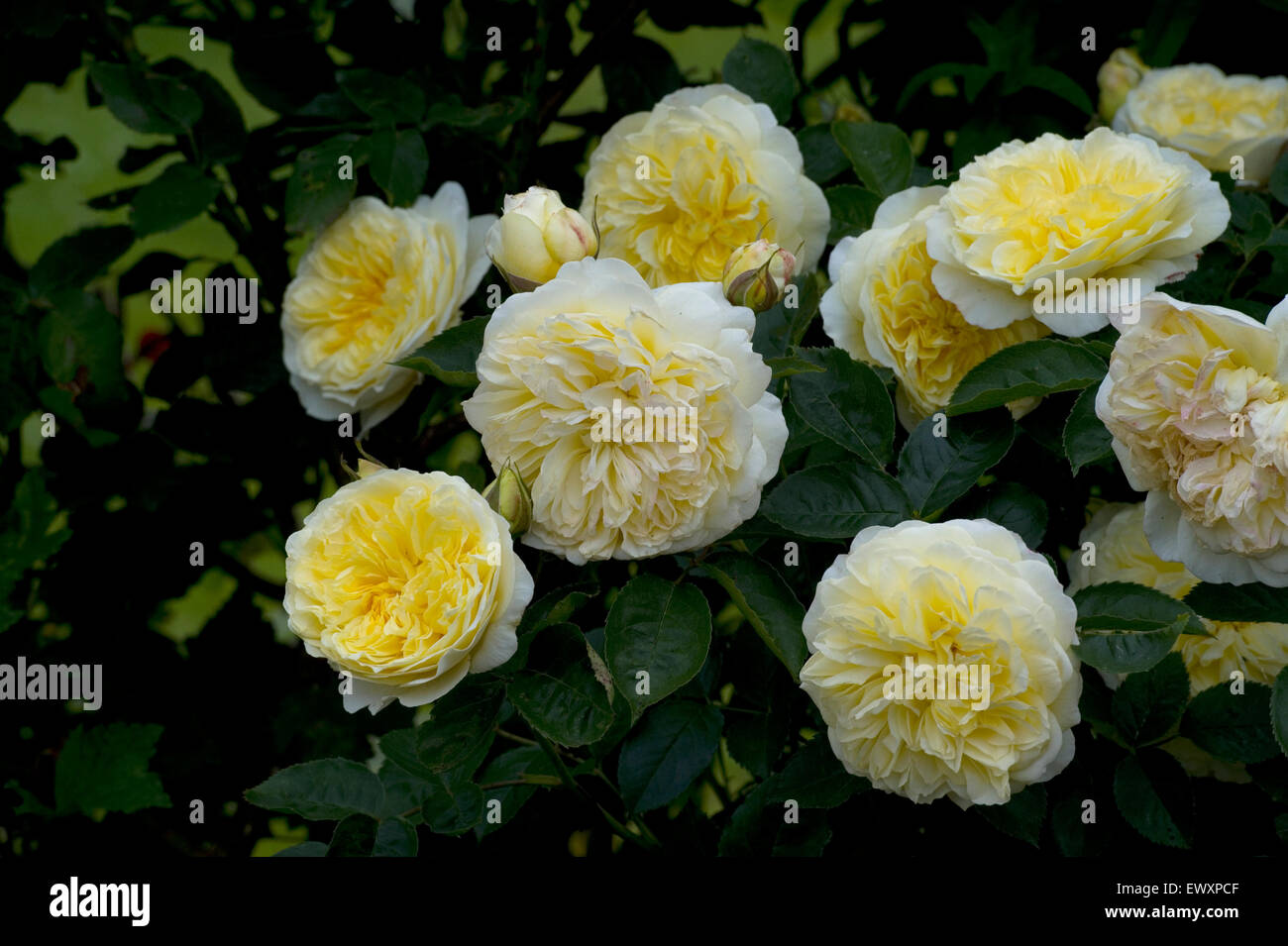The Beauty of David Austin Roses
David Austin, a renowned rose breeder, has been perfecting the art of creating exquisite English climbing roses for over five decades. His stunning collection boasts unique characteristics that set them apart from other rose varieties. With their old-world charm and robust growth habits, David Austin yellow climbing roses have become a favorite among rose enthusiasts and gardeners alike. These magnificent roses are capable of transforming any garden into a breathtaking display of color and fragrance.
One of the key factors that contribute to the beauty of David Austin yellow climbing roses is their ability to blend seamlessly into traditional and modern garden settings. Whether trained to climb up a trellis, arbor, or wall, these roses create a stunning display of cascading blooms that can add a touch of elegance to any outdoor space. Their vibrant yellow hues range from soft pastel shades to bright golden tones, providing a versatile palette for garden designers to work with.
In addition to their aesthetic appeal, David Austin yellow climbing roses are also prized for their robust growth habits and disease resistance. These traits make them an excellent choice for gardeners who want to create a low-maintenance yet stunning rose garden. With proper care and attention, David Austin yellow climbing roses can thrive for years, providing a constant source of beauty and fragrance to any garden.
For those looking to add a touch of sophistication to their garden, David Austin yellow climbing roses are an excellent choice. Their unique blend of old-world charm and modern vigor makes them a standout among other rose varieties. Whether you’re a seasoned gardener or just starting out, these magnificent roses are sure to provide a breathtaking display of beauty and fragrance that will leave a lasting impression.
https://www.youtube.com/watch?v=V-JBsrktR1k
Choosing the Perfect Yellow Climbing Rose
David Austin’s climbing rose collection offers a diverse range of yellow shades, from soft pastel hues to vibrant golden tones. When selecting the perfect variety for your garden, consider the style and climate of your outdoor space. For a traditional look, opt for a rose with a softer yellow hue, such as ‘Graham Thomas’ or ‘The Pilgrim’. These varieties feature delicate, cup-shaped blooms that exude a classic charm.
For a more modern and vibrant display, choose a rose with a brighter yellow tone, such as ‘Teasing Georgia’ or ‘Crown Princess Margareta’. These varieties boast larger, more dramatic blooms that are sure to make a statement in any garden. Consider the color scheme of your garden and choose a rose that complements or contrasts with the existing hues.
Climate is also an essential factor to consider when selecting a David Austin yellow climbing rose. If you live in a cooler climate, choose a variety that is more resistant to frost and disease, such as ‘Graham Thomas’ or ‘The Pilgrim’. For warmer climates, opt for a variety that is more heat-tolerant, such as ‘Teasing Georgia’ or ‘Crown Princess Margareta’.
In addition to considering the style and climate of your garden, also think about the level of maintenance you are willing to commit to. Some David Austin yellow climbing roses require more pruning and training than others, so choose a variety that fits your lifestyle and gardening experience.
By considering these factors and choosing the perfect David Austin yellow climbing rose for your garden, you can create a stunning display of beauty and fragrance that will thrive for years to come.
How to Train and Prune Your Climbing Rose
Training and pruning are essential steps in maintaining the health and beauty of David Austin yellow climbing roses. Proper training helps to establish a strong, vigorous structure, while pruning encourages blooming and promotes overall plant health.
To train your David Austin yellow climbing rose, begin by selecting a sturdy support system, such as a trellis or arbor. Gently twine the rose’s stems around the support, working from the base of the plant upwards. This will help to establish a strong, upright habit and encourage the rose to grow upwards.
Once the rose has reached the desired height, prune it regularly to maintain its shape and promote blooming. Prune your David Austin yellow climbing rose in late winter or early spring, removing any dead, diseased, or damaged wood. Cut back the stems to about 12-18 inches from the ground, making clean cuts just above a bud eye.
During the growing season, remove any weak or spindly growth, and trim back the tips of the stems to encourage branching. This will help to promote a full, bushy habit and encourage more blooms.
It’s also essential to deadhead your David Austin yellow climbing rose regularly, removing spent blooms to encourage more flowering. Simply snip off the faded blooms, making clean cuts just above a leaf node.
By following these simple training and pruning steps, you can help to create a stunning display of David Austin yellow climbing roses that will thrive and bloom beautifully for years to come.
Here’s a step-by-step guide to pruning your David Austin yellow climbing rose:
1. Remove any dead, diseased, or damaged wood.
2. Cut back the stems to about 12-18 inches from the ground.
3. Remove any weak or spindly growth.
4. Trim back the tips of the stems to encourage branching.
5. Deadhead regularly to encourage more flowering.
Designing a Stunning Rose Garden with Yellow Climbers
Creating a breathtaking rose garden featuring David Austin yellow climbing roses as the centerpiece requires careful planning and consideration of several key factors. One of the most important aspects to consider is companion planting, which involves selecting plants that complement the roses in terms of color, texture, and growth habits.
For a stunning rose garden, consider pairing David Austin yellow climbing roses with other plants that share similar growing conditions and bloom times. Some excellent companion plants for yellow climbing roses include clematis, honeysuckle, and shrubs like lavender and rosemary. These plants not only add visual interest and diversity to the garden but also provide a source of food and shelter for beneficial insects and wildlife.
In addition to companion planting, garden design principles also play a crucial role in creating a stunning rose garden. Consider the overall style and theme of your garden, as well as the color scheme and texture of the surrounding plants. For a traditional look, pair David Austin yellow climbing roses with classic garden features like stone walls, trellises, and ornate planters.
For a more modern and contemporary look, consider incorporating David Austin yellow climbing roses into a mixed border featuring a variety of plants with different textures, colors, and growth habits. This type of garden design not only adds visual interest and diversity but also creates a thriving ecosystem that supports a wide range of beneficial insects and wildlife.
When incorporating David Austin yellow climbing roses into a mixed border, consider the following tips:
1. Choose a variety of plants with different growth habits and textures to add visual interest and diversity to the garden.
2. Select plants that share similar growing conditions and bloom times to ensure a cohesive and harmonious display.
3. Consider the color scheme and texture of the surrounding plants and choose companion plants that complement the David Austin yellow climbing roses.
4. Incorporate a mix of evergreen and deciduous plants to provide year-round interest and structure in the garden.
By following these tips and incorporating David Austin yellow climbing roses into a well-designed garden, you can create a stunning display of beauty and fragrance that will thrive and bloom beautifully for years to come.
The Best David Austin Yellow Climbing Roses for Your Garden
David Austin’s yellow climbing rose collection offers a diverse range of varieties, each with its unique characteristics, growth habits, and flowering features. Here are three of the best David Austin yellow climbing roses for your garden, along with their key features and benefits:
‘Graham Thomas’ is a popular variety of David Austin yellow climbing rose, known for its vibrant golden blooms and robust growth habit. This rose is ideal for training up a trellis or arbor, and its blooms are highly fragrant, making it a great choice for perfumed gardens.
‘Teasing Georgia’ is another stunning variety of David Austin yellow climbing rose, featuring soft pastel yellow blooms with a delicate, cup-shaped form. This rose is perfect for creating a romantic, vintage-inspired garden, and its blooms are highly disease-resistant, making it a great choice for gardeners who want a low-maintenance option.
‘Crown Princess Margareta’ is a majestic variety of David Austin yellow climbing rose, boasting large, vibrant yellow blooms with a strong, sweet fragrance. This rose is ideal for creating a dramatic, show-stopping display in your garden, and its blooms are highly repeat-flowering, making it a great choice for gardeners who want a long-lasting display of color.
When choosing a David Austin yellow climbing rose for your garden, consider the following factors:
1. Climate: Make sure to choose a variety that is suitable for your garden’s climate and temperature range.
2. Soil: David Austin yellow climbing roses prefer well-draining soil with a pH between 6.0 and 6.5.
3. Sunlight: Most David Austin yellow climbing roses require full sun to partial shade, so make sure to choose a variety that suits your garden’s sunlight conditions.
4. Support: David Austin yellow climbing roses require support as they grow, so make sure to provide a sturdy trellis or arbor for them to climb on.
By choosing the right David Austin yellow climbing rose for your garden, you can create a stunning display of beauty and fragrance that will thrive and bloom beautifully for years to come.
Common Challenges and Solutions for Growing Climbing Roses
While David Austin yellow climbing roses are generally easy to grow and maintain, there are some common challenges that may arise. Here are some of the most common issues and their solutions:
Black spot is a common fungal disease that can affect David Austin yellow climbing roses, causing black spots to form on the leaves. To prevent black spot, make sure to provide good air circulation around the plants, and remove any infected leaves or stems. You can also use a fungicide specifically designed for roses to treat the disease.
Powdery mildew is another common fungal disease that can affect David Austin yellow climbing roses, causing a white powdery coating to form on the leaves. To prevent powdery mildew, make sure to provide good air circulation around the plants, and remove any infected leaves or stems. You can also use a fungicide specifically designed for roses to treat the disease.
Lack of flowering is a common issue that can affect David Austin yellow climbing roses, especially if they are not receiving enough sunlight or nutrients. To encourage flowering, make sure to provide at least 6 hours of direct sunlight per day, and fertilize the plants regularly with a balanced fertilizer.
Other common issues that may arise when growing David Austin yellow climbing roses include pests such as aphids and whiteflies, and physical damage from wind or frost. To prevent pests, use a pest control method specifically designed for roses, and to prevent physical damage, provide support for the plants and protect them from extreme weather conditions.
By being aware of these common challenges and taking steps to prevent them, you can ensure that your David Austin yellow climbing roses continue to thrive and bloom beautifully for years to come.
Here are some preventative measures you can take to ensure optimal rose health:
1. Provide good air circulation around the plants to prevent fungal diseases.
2. Remove any infected leaves or stems to prevent the spread of disease.
3. Use a fungicide specifically designed for roses to treat fungal diseases.
4. Provide at least 6 hours of direct sunlight per day to encourage flowering.
5. Fertilize the plants regularly with a balanced fertilizer to promote healthy growth and flowering.
Combining Climbing Roses with Other Plants for a Thriving Garden
David Austin yellow climbing roses can be combined with a variety of other plants to create a diverse and thriving garden ecosystem. One popular option is to pair them with clematis, which can provide a stunning display of color and texture. Clematis can be trained to climb up the same trellis or arbor as the roses, creating a beautiful and dynamic display.
Another option is to combine David Austin yellow climbing roses with honeysuckle, which can provide a sweet fragrance and attract pollinators to the garden. Honeysuckle can be trained to climb up a trellis or arbor, or can be allowed to spill over the edges of a container or hanging basket.
Shrubs can also be used to complement David Austin yellow climbing roses, providing a backdrop of foliage and texture. Some popular shrubs to pair with roses include boxwood, lavender, and rosemary. These shrubs can be pruned to maintain a neat and tidy shape, and can provide a beautiful contrast to the climbing roses.
When combining David Austin yellow climbing roses with other plants, it’s essential to consider the growing conditions and requirements of each plant. Make sure to choose plants that have similar growing conditions and requirements, and that will not compete with the roses for water and nutrients.
Here are some tips for combining David Austin yellow climbing roses with other plants:
1. Choose plants that have similar growing conditions and requirements.
2. Consider the texture and color of the plants, and choose plants that will provide a beautiful contrast to the roses.
3. Make sure to provide enough space for each plant to grow and thrive.
4. Consider using a trellis or arbor to support the climbing roses and other plants.
By combining David Austin yellow climbing roses with other plants, you can create a diverse and thriving garden ecosystem that will provide beauty and interest throughout the growing season.
Maintenance and Care Tips for Long-Lasting Beauty
To ensure that your David Austin yellow climbing roses continue to thrive and bloom beautifully for years to come, it’s essential to provide them with proper maintenance and care. Here are some essential tips to keep in mind:
Fertilization: Feed your David Austin yellow climbing roses with a balanced fertilizer in the spring and again in the summer. This will provide them with the necessary nutrients to promote healthy growth and flowering.
Deadheading: Remove spent blooms from your David Austin yellow climbing roses to encourage more flowering and prevent seed production. This will also help to maintain the appearance of the plant and promote new growth.
Winter Protection: Protect your David Austin yellow climbing roses from harsh winter weather by applying a layer of mulch or straw around the base of the plant. This will help to insulate the roots and prevent damage from freezing temperatures.
Pruning: Prune your David Austin yellow climbing roses in the late winter or early spring to maintain their shape and promote new growth. Remove any dead, diseased, or damaged wood, and cut back the stems to about 12-18 inches from the ground.
By following these maintenance and care tips, you can ensure that your David Austin yellow climbing roses continue to thrive and bloom beautifully for years to come.
Here are some additional tips to keep in mind:
1. Water your David Austin yellow climbing roses regularly, but avoid overwatering, which can lead to disease and root rot.
2. Provide your David Austin yellow climbing roses with full sun to partial shade, depending on the variety.
3. Use a trellis or arbor to support the climbing roses and keep them upright.
4. Monitor your David Austin yellow climbing roses regularly for signs of pests or disease, and take action promptly if you notice any problems.
By following these tips and providing your David Austin yellow climbing roses with proper maintenance and care, you can enjoy their beauty and fragrance for years to come.






